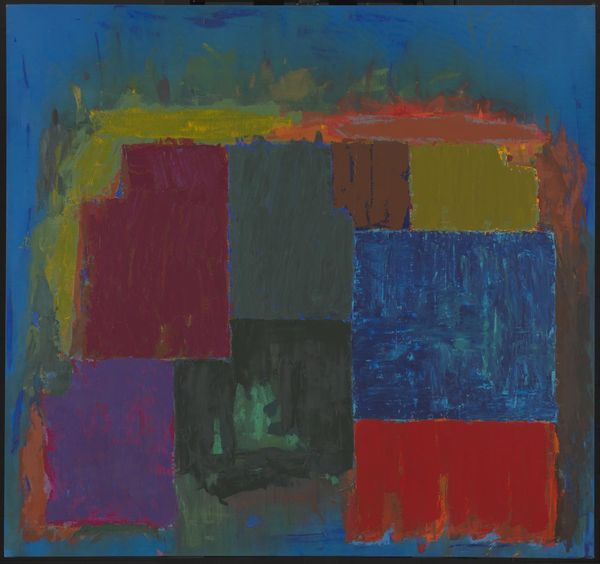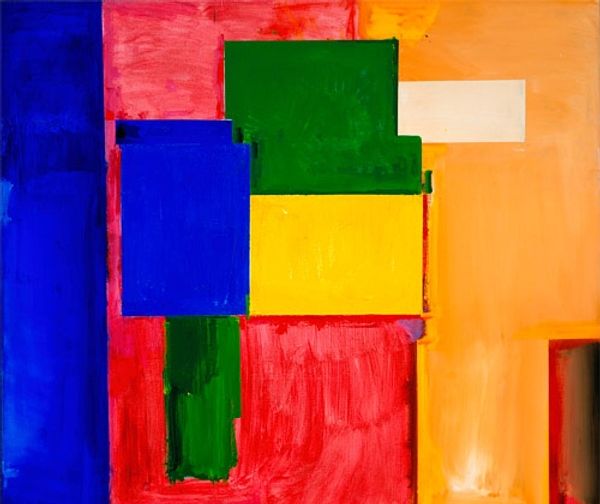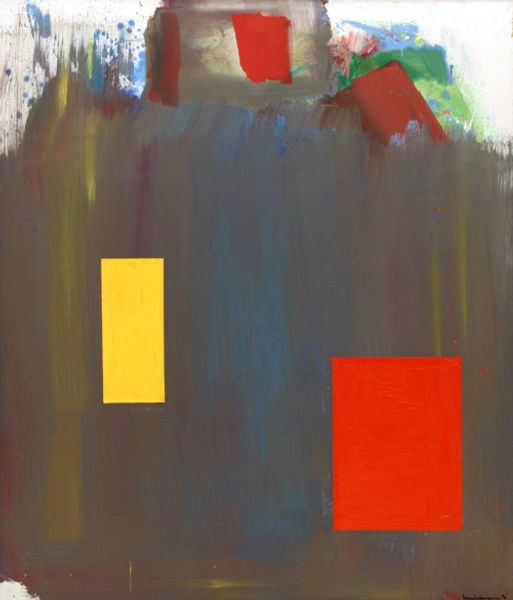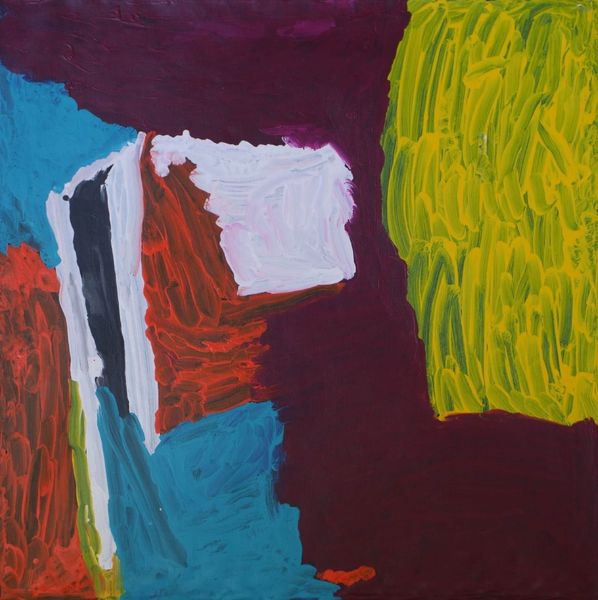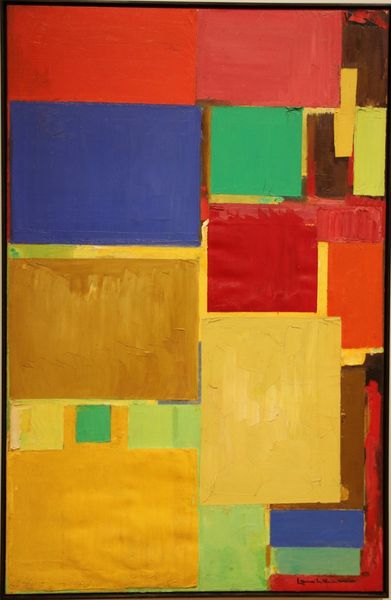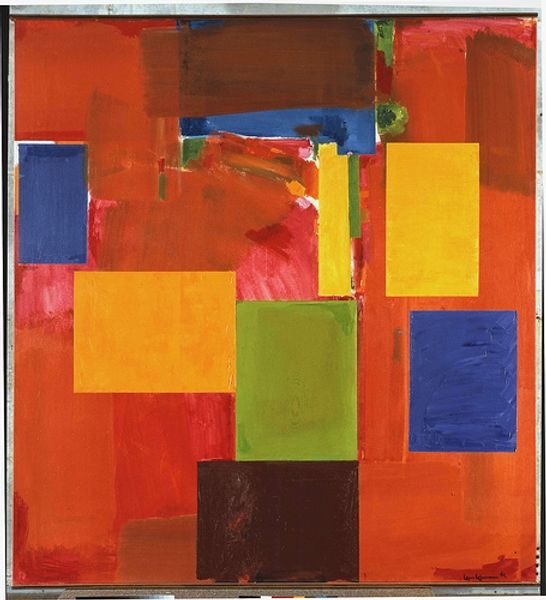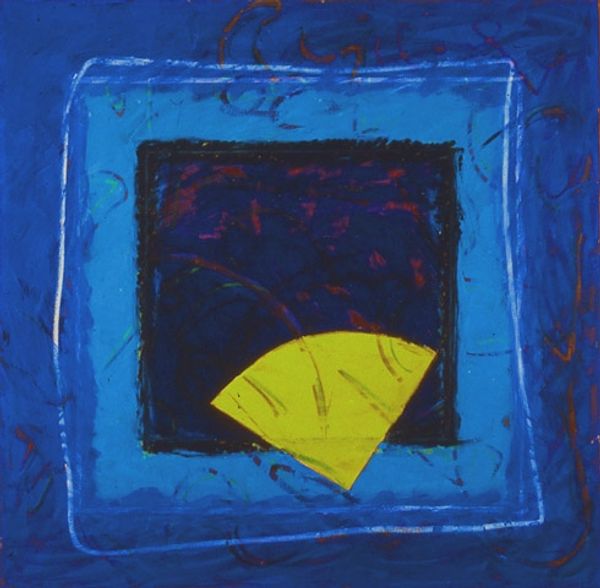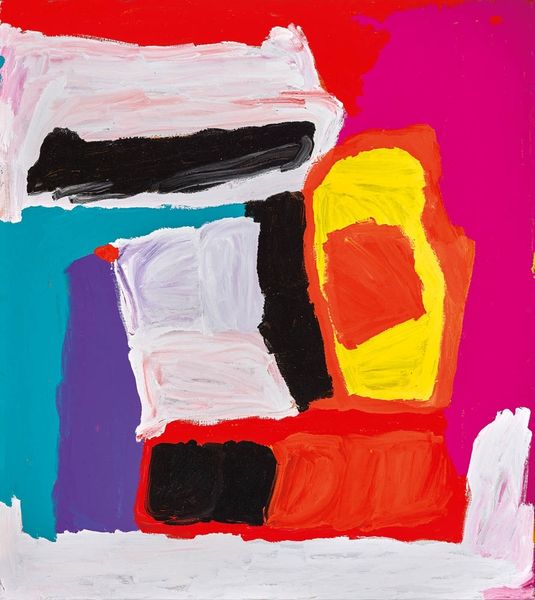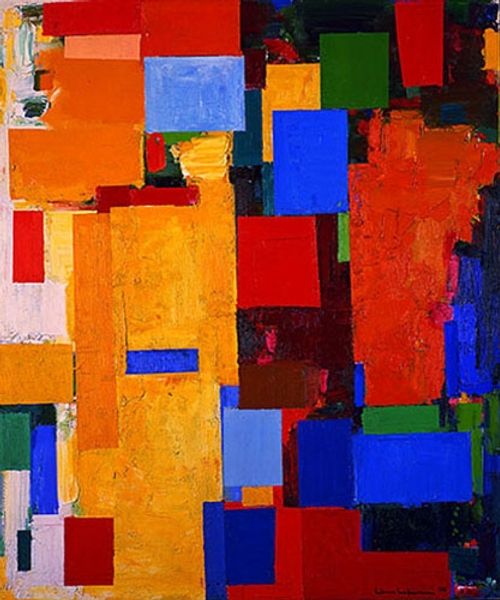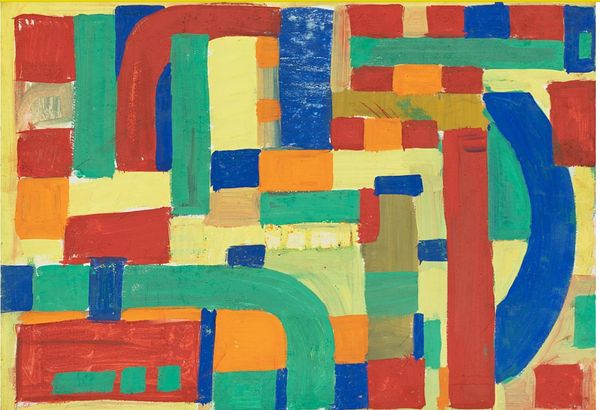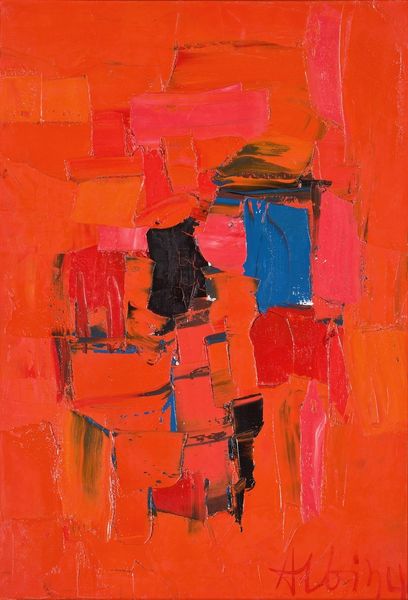
Copyright: John Hoyland,Fair Use
Curator: Immediately, the texture grabs me. You can practically feel the ridges and layers of the acrylic paint. Editor: I find that the choice of acrylic here signals a distinct shift in the artistic landscape, a move away from traditional oil paints, allowing artists to embrace faster drying times and build up textures in innovative ways. Shall we dive into this bold piece? This is John Hoyland’s "North Sound" from 1979, currently housed here at the Tate Britain. Curator: My first impression is this controlled chaos. Geometric blocks fighting to hold their own on the canvas, yet bathed in that overall ethereal blue. Editor: Interesting take! Considering its position within Hoyland's career, it represents a fascinating exploration of form and color relationships after his move into abstraction. He wasn't afraid to move away from figuration and really focus on materiality, something acrylic lent itself to. How the art world and institutions perceived it really validated abstract art on a grand scale, especially British abstraction. Curator: I am drawn to his manipulation of acrylic here. Note how some areas appear almost sanded down while others maintain thick impasto surfaces. The rough edges and varied surfaces contribute to the expressive power. Editor: I agree. His labor is very present here! Each swipe of paint embodies a physical engagement with his medium. And, of course, the use of colour. The intense hues layered atop one another creates this vibrant interplay. Red against green, the blue foundation fighting to break through. He plays a dangerous game, almost chaotic. Curator: Precisely! He doesn't smooth away the process; he emphasizes it, which becomes integral to its visual language. And consider the reception! In the 70s the dominance of abstract expressionism prompted important critical debates about intention, gesture and of course value. "North Sound," surely fueled some of that discourse, especially in England's institutional embrace of abstract works. Editor: Well, Hoyland certainly contributed to changing perspectives on abstract painting's capabilities, especially in pushing the material possibilities within painting practice. I’m particularly compelled to think about the role materiality had on viewers as a testament to what we value and the relationship we have with art-making as a kind of labor. Curator: Indeed! Hoyland's ability to provoke intellectual exchange highlights its cultural significance, leaving us contemplating both its physical creation and place in British visual culture.
Comments
No comments
Be the first to comment and join the conversation on the ultimate creative platform.
